What You Won’t Know from Violin Lessons
Most violin teachers will tell students that it is important to take good care of their instruments. But for many students, from regular violin lessons, they are not likely to get a specific concept of how to take good care of their violins on earth. Most violins are worth a good amount of money, and they will sound and look best when you play them if they are well-maintained. In today’s Violin App article, we are going to show you everything you need to know to properly maintain your violin.
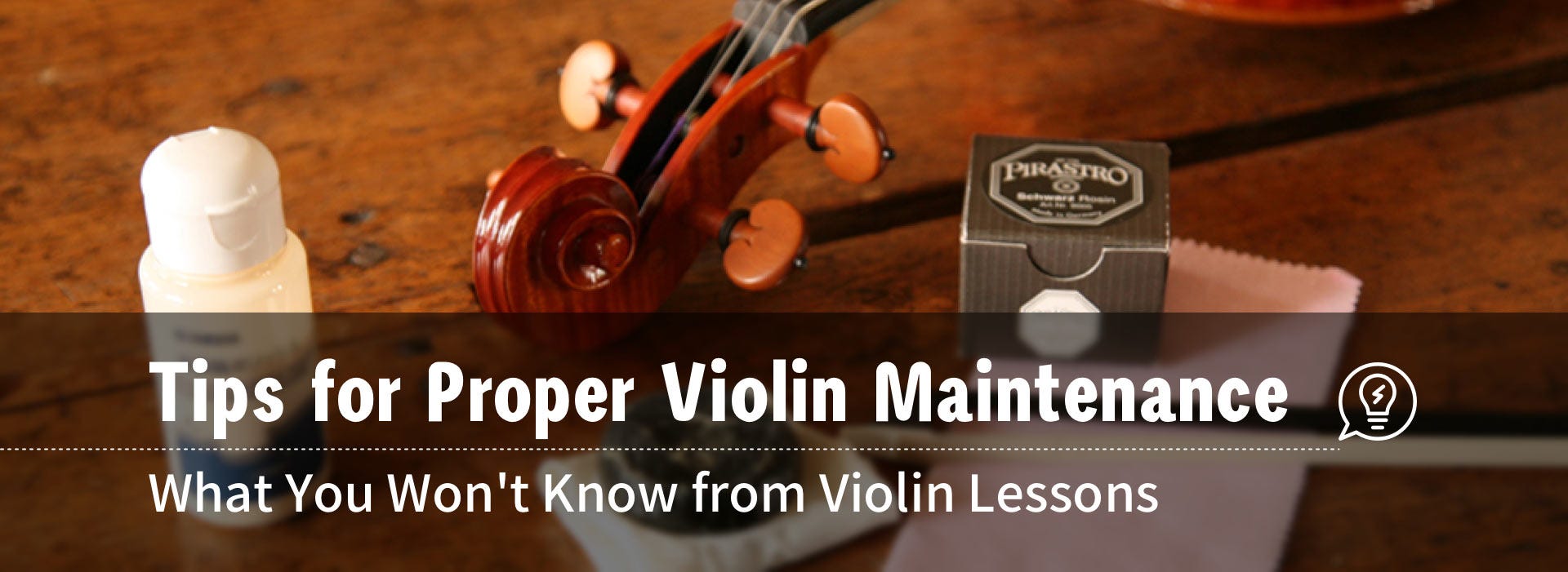
Clean the Violin after Playing It
You can begin with the rear deck when the instrument is new. Take a little dry handkerchief or cloth and make rotating motions. You need to wipe all the curves on the side as well when cleaning the front deck. Every day, after you practice, there will be a little bit extra rosin residue on your instrument, so make sure to clean under the fingerboard and the bridge to wipe off the rosin dust.
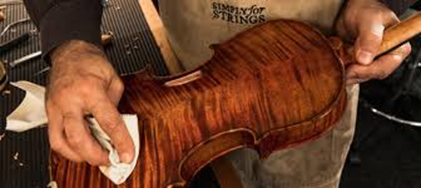
Besides, make sure to clean the fingerboard under the strings if the instrument is old with visible traces of rosin. Use cleaning solutions and don’t apply the solution directly to the wood. Then switch to the cloth. In this way it will not be concentrated in one spot. Don’t clean the neck with a solution, instead just wipe it down with a dry cloth.
Every couple of months you need to put a little shine on your violin. When you finish playing, your hands start to sweat a little bit and you also need to use a little rubbing alcohol on your handkerchief. Put that rubbing alcohol on the fingerboard. You can put a little bit on the neck as well, so it is nice and smooth for your left hand to shift and play nicely.
Clean the Strings before Tuning
When cleaning strings, you can use moist wipes. If the wipes are not available, just use a dry cloth and spirit. Wipe the strings carefully and don’t let the spirit touch the wood.

Pay Attention to the Bridge before Performing on Violin Lessons
The bridge is an important part of the violin, which is located in the middle of the F hall at the 90 degree angle to the violin. If there has been an accident and the bridge has fallen out of its place, grip it tightly with both hands and put it back in place. Try not to touch the strings in the bow zone.

Keep Perfect Humidity inside the Violin Case after Violin Lessons
Storage is very important for the acoustic violin. In most violin cases, there are built-in humidity meters, so the humidity is easy to control. Perfect humidity is about 45 to 55 percent. 60 to 40 is still okay.
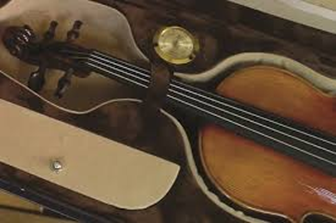
If a violin is in a dry room, put a container of water into the case. It will evaporate and raise the humidity a little bit. If the air is too humid, put some salt in the case to absorb the moisture. Please take a note: if you are using silver strings, you cannot use salt.
Make sure you keep your instrument in the case when you are not playing it, you need to strap it up nicely and not loosely at all. Keep in mind that the case should always be zipped when your violin is inside. Besides, remember to leave it home in a nice and well-ventilated area.

Tuning Pegs Need to Be Maintained as Well after Tuning
If the peg box has shrunk and the pegs are hard to pull out, put the peg box under the hot lamp for about two hours. The wood will expand and you will be able to pull the pegs out. If the pegs are loose and don’t hold the tuning, use chalk to stroke a few times on them. Then it will tighten the grip. If the pegs are hard to turn, use most basic household soap and apply it just like the chalk. Just make sure it is not scented.

Process of Changing the Violin Strings
When changing the strings, don’t take all the strings off at once, because the bridge might fall off and lose its perfect position. Change the strings one by one. Each string has a different thickness shown on the packaging. Take the appropriate string and put one end of the string into the hole of a tuning peg, and carefully wind it around the peg. Then insert the other end into the hole by the fine tuner.
You may change all the strings regularly. The frequency depends on how much you practice.
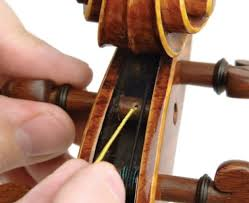
Take Care of Fine Tuners
Sometimes the fine tuners get stuck and are not easy to turn when fine-tuning. When they do, unscrew them and apply lubricant. We recommend cork grease. Make sure that the lubricant doesn’t come into contact with the wood.
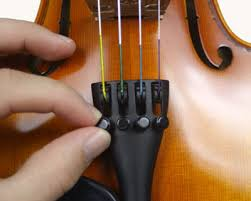
Clean the Bow for Better Tone on Violin Lessons
When cleaning the bow, use a dry cloth. Make sure that you wipe the stick without touching the hair. At the side of the bow, there is a screw that regulates the tension of the hair. Make sure that the screw is not too tightly wound. After playing, loosen the screw and the stick doesn’t get bent if humidity changes. Tighten the screw again before playing.
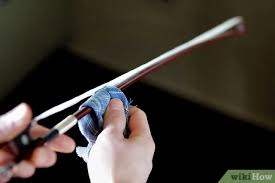
Tips for Applying Rosin before Violin Performing
If you have a new bow, you need to apply rosin very carefully like doing it inch by inch. If you have used the bow for a while and feel that you need to reapply the rosin because the tension is fading, apply it more lightly. When applying the rosin, don’t push. It can cause large pieces of rosin to get stuck in the hair and cause unpleasant sounds. If you have applied too much rosin, unwind the screw and hit the bowl lightly to shake the dust off.
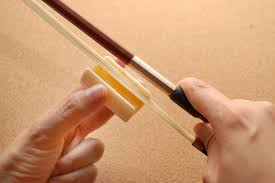
Just follow these simple steps and your instrument will serve you for years to come.
Have a HAPPY practice!!
More Violin Articles:
Teaching Violin Students to Read Key Signatures
Solfeges used in Violin Lessons
How to Choose Right Violin Strings
Things You Must Know About Violin Bowing
Also, check out violin sheet music on Violy App~
#ViolyPractice makes Perfect!!
Follow us on: Violy.app
